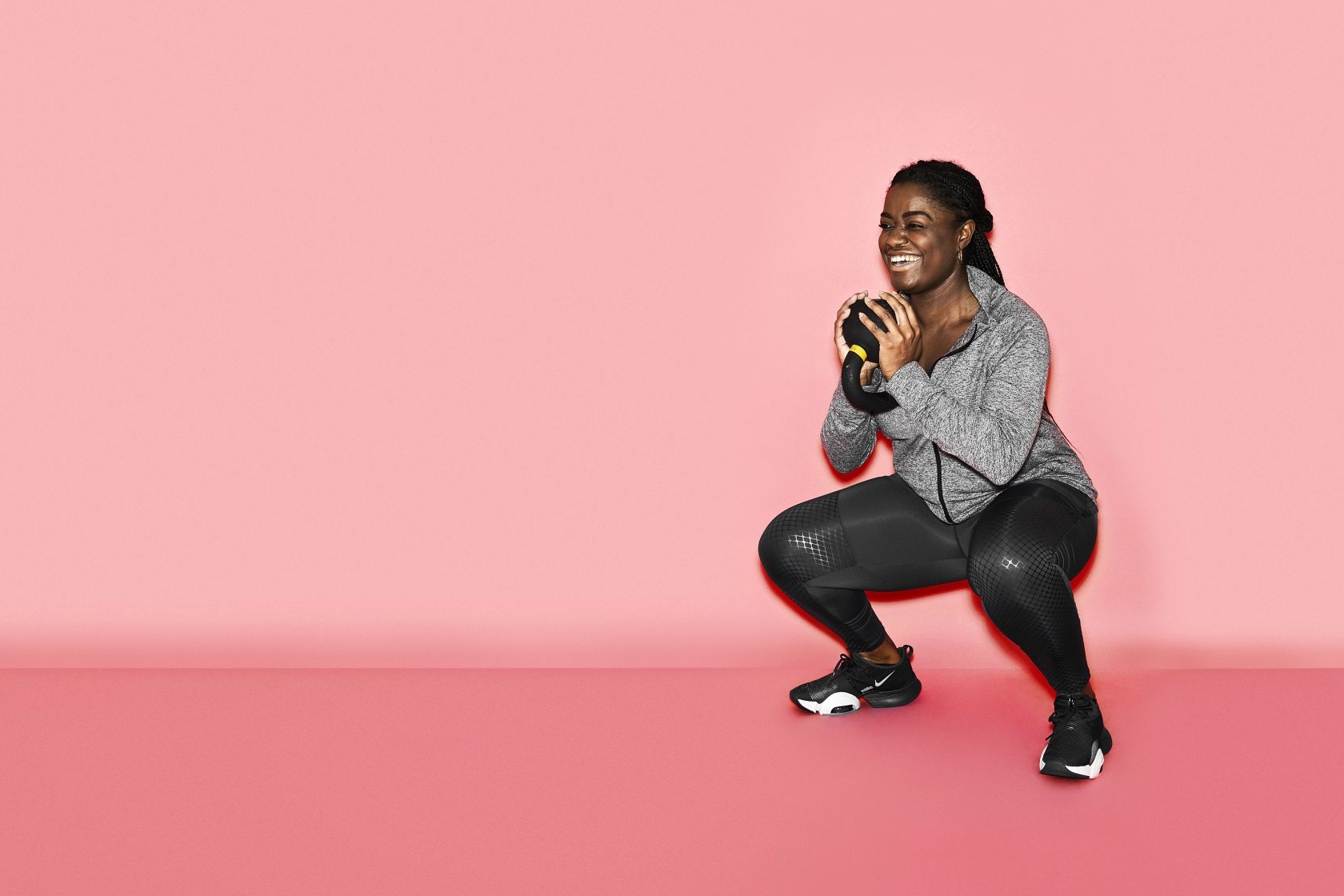Goblet, sumo or split – which squat is best?
Goblet, sumo or split – what’s the best way to squat? We asked a trainer to clear it up.
Ever looked at someone in the gym and thought “I’ve never seen that exercise done that way before”? Whether it’s using a landmine instead of a free weight, holding a bar with a different grip or having a varied stance, there’s a whole host of ways to perform even the simplest of exercises.
Take, for instance, the squat. If we asked you to perform one now, you’d probably take your feet at hip width apart, push your hips back and lower your knees before pushing back to standing. You wouldn’t be wrong – but after so long training like that, it might be time to mix it up.
You may also like
Squat-proof leggings: 7 of the best gym tights that aren't see through
“Some squats will feel better for you than others, depending on knee flexibility, hip mobility, core strength and also what your goal is,” explains personal trainer Veowna Charles. She says that we should practice different variations as they all target slightly different muscles and disciplines. “They work as accessories to your main compound squat so we can use varitions to improve weaknesses throughout our body and in turn improve our form,” Veowna adds.
So, what are these different squat variations, and what muscles do they target? We’ve broken it down for you here.
Back squat
The classic back squat involves loading a barbell on to the top of your back. “Stacking weights on your back focuses more on the muscles in your posterior chain, or the back of the body” says Veowna. So while they do engage the quads, back squats work the glutes and hamstrings a little more than other variations do.
“Putting weight on your back is also good because it’s the opposite to what we do everyday. Usually, we’re picking things up off the floor and hold them in front of us, or we hold bags to the side. It’s good to strengthen the back muscles and core using back squats,” Veowna says.

Front squat
This variation is also performed using a barbell, but held at the front of your body near your collarbone. This loads the weight through the anterior, or front, of your body, says Veowna. “If you find that you lean forward during back squats it could be because you don’t have the core strength or shoulder mobility to be able to keep a torso up high. Doing the front squat will train the muscles to keep your chest up and open during those squats,” says Veowna.
Sumo squat
These can be done with or without weights, but taking your legs wide and slightly turning your feet out gives a ‘sumo’ stance to your squat. “This is a really good way to work on the inner thigh muscles as well as target the glute max,” Veowna explains. “It’s a good one to do if you’re struggling with hip mobility because going all the way down with the knees out super wide really works through the joint.”
Goblet squat
A goblet squat involves holding a free weight at the front of your body, but unlike front squats, it isn’t hooked onto your shoulders. “The goblet squat focuses on the bottom part of the lift, which is really useful if you struggle to push out of a back squat to come to standing,” says Veowna. This is also a great way to start adding weight as a beginner, as it uses a dumbbell or kettlebell rather than a bar.
Split squats
A split squat involves pressing through just one foot, with the other resting on the floor or bench behind you. “Single-leg movements are really beneficial because they build stability and balance,” says Veowna.
“In a double leg movement, you won’t know if you are putting more emphasis through one side whereas single-leg movements allow you to train the weakest parts of each side without compensating,” she adds. Veowna also recommends adding in pistol squats, whereby you extend one leg in front of you as you lower down, as an alternative single leg movement.
Jump squats
“A jump squat is a plyometrics exercise that will target not just those slow-twitch muscle fibres which are good for strength and control, but also target those fast-twitch muscle fibres which are good for speed and power,” Veowna says. Adding these in can help with explosive cardiovascular moves, particularly sprinting.
Source: Read Full Article


